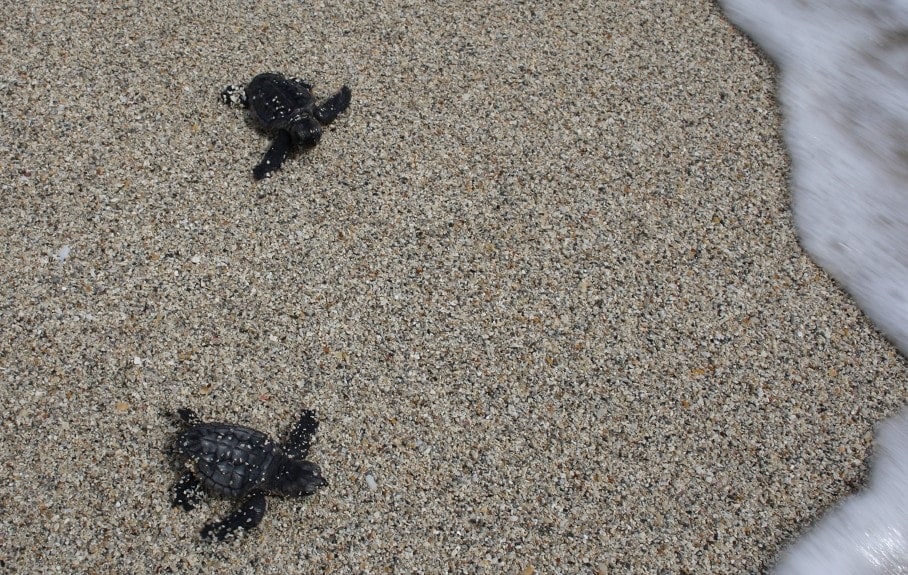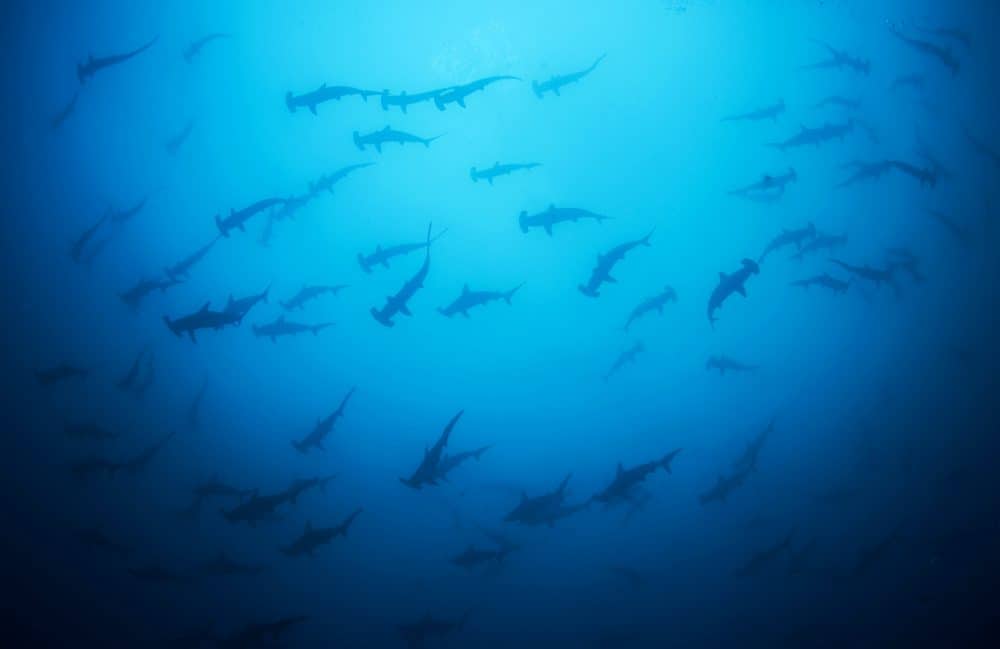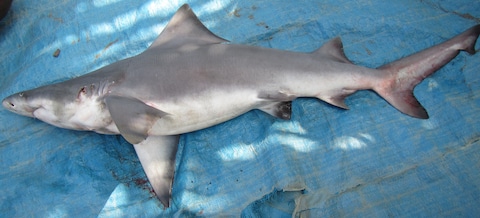
Mexican authorities seized 3.5 tons of shark fins from a shipping container in the coastal city of Manzanillo. The container full of both shark fins and sea bass swim bladders were bound for Hong Kong. The animals were originally caught in the Mexican state of Sinaloa. Sharks are included in Appendix II of the Convention on International Trade in Endangered Species of Wild Fauna and Flora (CITES). Read more…
This is a very, very upsetting headline. While scientists were on an expedition in Papua New Guinea, they came across a rare freshwater shark fins and jaws in a fish market. There were two species found the Speartooth and New Guinea River sharks. The species have not been documented since the 1970s and are critically endangered sharks on Earth. Scientists will now work with the local villagers to educate them on the threatened and understudied species throughout the Indo-Pacific. Read more…
 This week a new “Saving Sharks” exhibit opened at the aquarium in Corpus Christi. The exhibit cost $325,000 and allows visitors to track sharks that have been tagged. This exhibit is supported by OCEARCH, the Houston Museum of Natural Science, and the Harte Research Institute for Gulf of Mexico Studies at Texas A&M University-Corpus Christi. Read more…
This week a new “Saving Sharks” exhibit opened at the aquarium in Corpus Christi. The exhibit cost $325,000 and allows visitors to track sharks that have been tagged. This exhibit is supported by OCEARCH, the Houston Museum of Natural Science, and the Harte Research Institute for Gulf of Mexico Studies at Texas A&M University-Corpus Christi. Read more…
5. Scientists Identify Climate ‘Tipping Points’
 This week, a paper published in the journal Endangered Species Research reported that the climate change may impact the the sex of baby loggerhead sea turtles. Loggerheads develop into males or females during the egg incubation period. Both rainfall and temperature may impact the sea turtle sex ratio. Scientists are currently seeing a high ratio of females to males in the loggerhead populations in Florida. This is an important finding in a species that is already listed by the federal government as endangered or threatened. Read more…
This week, a paper published in the journal Endangered Species Research reported that the climate change may impact the the sex of baby loggerhead sea turtles. Loggerheads develop into males or females during the egg incubation period. Both rainfall and temperature may impact the sea turtle sex ratio. Scientists are currently seeing a high ratio of females to males in the loggerhead populations in Florida. This is an important finding in a species that is already listed by the federal government as endangered or threatened. Read more… After years of charting fish movement along the Atlantic coast of the US, the National Oceanic Administration has noticed that the distribution of fish larvae has changed over the last 40 years. Spawning and juvenile development are occurring in different habitats which may impact fish development. In addition to that, the larvae that are shifting habitats are not matching the shift of the adults. According to the study, 43% of larval taxa and 50% of the adult taxa have shifted. Read more…
After years of charting fish movement along the Atlantic coast of the US, the National Oceanic Administration has noticed that the distribution of fish larvae has changed over the last 40 years. Spawning and juvenile development are occurring in different habitats which may impact fish development. In addition to that, the larvae that are shifting habitats are not matching the shift of the adults. According to the study, 43% of larval taxa and 50% of the adult taxa have shifted. Read more…

Would you live in a floating city? With recent studies indicating that the Earth will see continuous sea level rise, it’s an interesting to think about. Scientist have recently designed a floating university in the shape of a manta ray. The ‘city’ can carry up to 7,000 students, researchers, and professors. The vessel is 3,000 feet long and is a completely self sufficient and sustainable environment. Read more…
Be sure to “LIKE” http://facebook.com/SeaSave to ensure our “Week in Review” is delivered to your newsfeed every Thursday.






